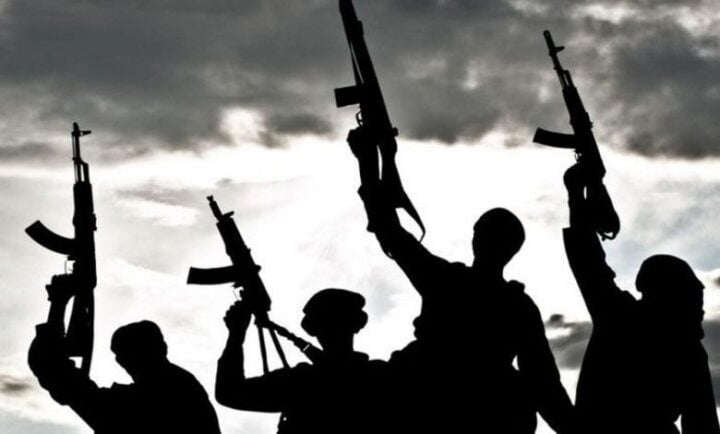22.5 kilometres in south-west of Sokoto, there used to exist a community called Satiru. In March 1906, it was extinguished from the face of the earth. Three years earlier, in July 1903, the British had massacred Muhammadu Attahiru, the 11th Sultan of Sokoto together with over 1,000 of his followers, decapitating him in Burmi (near Bajoga in present-day Gombe state, north-east Nigeria) and then displayed photographs of “the beheaded Sultan of Sokoto throughout Northern Nigeria”.
Many among the faithful in the region at the time regarded Frederick Lugard and his lot as infidels. The fate of Sultan Attahiru inspired, as Lugard would later complain in his 1906 annual report, “a series of local ebullitions in favour of some Mahdi or reformer”, claiming a mission to rid the people of these infidels.
At the beginning of February 1904, Satiru’s district head proclaimed himself The Mahdi and his son, Prophet Isa (Jesus). Sultan Muhammadu Attahiru II, whom the British installed the previous year after killing his brother, arrested and detained the Mahdist pretender, who tragically died in detention. His son, Isa, succeeded him.
In January 1906, an itinerant preacher, Dan Makafo, arrived from French Niger (Niger Republic) to boost Isa’s insurgent claims. The following month, when the neighbouring community of Tsomo were reluctant to accord him recognition as a prophet, Isa and his followers attacked the village, reportedly killing 14 and declaring a Jihadist rebellion against the British infidels.
Advertisement
Unlike in 1904 when they encouraged the Sultan to deal with Isa’s dad, the British chose in 1906 to handle Isa’s impertinence by themselves. On Saint Valentine’s Day in 1906, the Acting Resident, Mr Hillary; his assistant, Mr AGM Scott, and a force of over 70 mounted infantry led by Lt. Francis Blackwood, approached Isa and his rebellious followers in Satiru. The absence of mutual intelligibility did not help mutual suspicion. Communication quickly broke down between both sides and in the ensuing chaos, Isa and his followers killed Hillary, Scott, Blackwood and 29 of their troops, leaving the remainder to retreat in disarray.
On March 10, Lugard’s forces returned to Satiru. They comprised 573 rifles, 70 armed police, a 2.95-inch gun and several Maxim guns. Confronting them were Isa and over 2,000 of his followers armed with traditional weapons. It was a mismatch. Lugard quotes what happened next: “Someone gave an order, everyone fired, then a whistle blew, everyone stopped and there was no one left alive in the front.”
According to Jonathan Dewhirst, “In total, it was estimated that Satiru lost over two thousand men killed, with over three thousand women and children captured. By half-past two in the afternoon, the mission had ended, and the town burnt to the ground. The Sultan destroyed the ruins utterly, and decreed that the town should never be rebuilt”.
Advertisement
Isa was killed in the massacre. Dan Makafo was apprehended with the five remaining leaders of the rebellion. Sultan Attahiru II had the six of them convicted by the Sokoto Native Court for rebellion and murder before executing them.
Lugard wrote a racy account of the extermination of Satiru in his 1906 annual report, exulting that the situation “demanded a signal and overwhelming victory for the restoration of our prestige and the prevention of any such rising in future”.
Nine years earlier, in February 1897, General Harry Rawson led an expedition that massacred its way through Benin, ransacking the city and its civilisation in retribution for an incident recalled by Queen Victoria in her diary of January 12, 1897, as follows: “a number of English officers & civilians including doctors who went on a friendly mission, but imprudently not armed, were attacked & fired upon by the King of Benin”.
Satiru was almost assuredly the most egregious but by no means the only example of such punitive colonial expeditions. Lugard described the policy as one entailing “a terrible retribution” with the stated goal being to “render any further appeal to arms unnecessary in the Sokoto Province for very many years”.
Advertisement
On the centenary of the extermination of Satiru, historian, Richard Gott, recalled that this was a vain hope, pointing out that “active Islamic resistance continued in Northern Nigeria until the 1930s, remaining a permanent concern and irritant to colonial officers”.
Some could argue with justification that this resistance continues until the present day. Not unlike the colonial period, martial retribution has not prevented assaults on uniformed symbols of the Nigerian state. Instead, it has guaranteed it.
In the last week of October 1990, youths in Umuechem, an oil-bearing community in Rivers state, protested against Shell Petroleum, alleging acts of pollution that had decimated their environment, livelihoods and wellbeing. Shell invited the police to quell the protests, which had been largely peaceful.
In the early hours of October 31, a squadron of the Police Mobile Force invaded the community shooting at random “in a purported attempt to locate three of their members who had not returned the previous evening”. Over 80 members of the community were reported killed and nearly 500 houses were destroyed or burnt by the police. A judicial commission of inquiry into the Umuechem Massacre later found “no evidence of a threat by the villagers and concluded that the Mobile Police had displayed ‘a reckless disregard for lives and property’.”
Advertisement
Umuechem did not quell restiveness in the Niger Delta. Instead, it appeared to inflame the region’s youths and radicalise them. The brutal murder by armed gangs of 12 police officers in Odi, Bayelsa state in November 1999, led to bloody reprisals on the orders of President Obasanjo “which may have killed hundreds of unarmed civilians”.
As Chief of Army Staff, General Victor Malu oversaw the reprisals in Odi. A mere two years later, in October 2001, the killing of 19 soldiers in his community, Zaki Biam, in Benue state, led to similar reprisals in which “more than 200 people died at the hands of the soldiers”. Over the three years from 1999 to 2002 alone, CLEEN Foundation and the World Organization against Torture (OMCT), reported “over fifty separate and documented incidents” and “over ten thousand Nigerians have reportedly been victims of extrajudicial executions at an average of over 200 executions per incident.”
Advertisement
14 years later, the excuse for the Zaria Massacre was that an un-named member of the Islamic Movement of Nigeria (IMN), as the Shiites of Nigeria are mostly called, had desecrated the epaulette of an army general. The full casualty count has never been established but the official inquiry acknowledged that it took nearly 50 soldiers using 14 lorries, over six hours to dispose of the bodies in mass graves in Mando, near Kaduna.
Half a century ago, on Christmas Eve in 1974, a soldier was reported missing in Ugep, Cross River central. Soldiers sent by the commanding officer to look for their colleague set upon the villagers “killing innocent men, children and raping their women who were eagerly waiting to celebrate Christmas”. 13 people were reported killed and over 100 injured. Days thereafter, the body of the soldier was found in a gutter in the village. An inquiry later showed that the soldier who was “given to drunkenness and suffered occasional epilepsy” had “choked on his sputum and died”.
Advertisement
There may be little comparison between the circumstances of the reported death of the soldier in Ugep in 1974 and what transpired in Okuama, Ughelli South in Delta State 50 years later. Remarkably, the Okuama incident occurred in the month of the 118th anniversary of the extermination of Satiru.
President Bola Tinubu has rightly communicated the revulsion of all right-thinking persons at the mass murder of three senior officers of the Nigerian Army with 13 men under their command, followed by the desecration of the remains. He has also given the armed forces a free hand to ensure that “the offenders will not go unpunished” and promised to honour the memory of the fallen soldiers.
Advertisement
A dispassionate board of inquiry must get to the root of how these soldiers met their unconscionable fate, who was responsible, and how they were deployed on the mission that consumed their young lives. It is time to turn the page on this cycle of escalation, retribution and bloody reprisal that has prospered for 118 years since Satiru.
A lawyer and a teacher, Odinkalu can be reached at [email protected]
Views expressed by contributors are strictly personal and not of TheCable.
Add a comment







